
Well I have been puzzling myself all day (and last night for that matter) for what lead to the disaster. But before I start the “assay” of my conclusion I will need to explain why I am so upset. See at the place I went I have the nickname chef. Not that I am a true one, but I am sure a wannabe. There are therefore at least for me certain standards my food has to reach, to be considered successful. However many times I do not succeed and that ‘s fine with me. I just try to trace the reason for the failure and try next time to change the proportions of the ingredients, the baking method and any other minor adjustment to fix the recipe.
However in this case it was a major disaster that did not let me even try that creation. So this was a failure that came not because of me (or at least that ‘s what I thought initially), it was a failure of such magnitude that could not sample the final creation, and finally it came at a point that was 95.2% done (just to be precise (21h-16h-3h-1h)/21=0.952). I just find it so unfair. But there still some conclusions that can be drawn here. So let ‘s get started.
The dish supposed to be Pyrex. It had the Pyrex logo on it and has been used in the past many many times apparently with no problems. I am sure you have used many times before and it is known to be the only glassware that can tolerate high temperature. Actually it is supposed to go from heat to cold and back without any problems. Pyrex is a type of glass that is treated in very special way. The melted glass goes into a mold and pressed. Usually at that stage the glass is cooling in a very controlled way to remove any stresses. In the case of pyrex, however, the outer surface is uniformly cooled and therefore contracts while the inside is still hot and therefore expanded. Then the glass is cooled and and the inner glass contracts and pulls inwards the outer shell. This creates a tight shell which applies an inwards stress to the class. Try to imagine it as a net that surrounds the glass. When the glass is rapidly heating the “net” acts as glue that keeps it from cracking. Similarly when it is hot and and rapidly cooled the “net” is keeping it from cracking. This process is known as tempering and the windshield in the car is made in the same manner. And on of the great advantages, is that wen it shatters it breaks into small pieces, that are not harmfull.
So that ‘s where I think things went wrong. The “net” protects the glass from baking when you impose it to the heat and cold. However, this happens under a certain condition, the uniform heating or cooling. By that I mean that localized heating can perturb the “net”. This can happen when there is a temperature gradient, for instance, apply very high heat in a very narrow area, while the rest remains in a cooler temperature. A small parenthesis on how oven work: There is a chamber, a heating element at the bottom, and a thermometer, located usually at top of the oven. The heating element heats up always at the same temperature, until the thermometer reads the desired temperature. So even if the setting is to the lowest, the heating will reach the same temperature, for shorter time. When I had the dish into the oven it was touching the element that was set to warm. When I took it out the cooling was too rapid, and the temperature gradient became large. And there you have it! Recipe for disaster. Of-course that is not enough, I guess that the dish was defective at the first place. To further justify this argument I quote the WIKIPEDIA page regarding the Pyrex.
“…Pyrex, while more resistant to thermal shock than other types of glass, should never be subject to drastic or uneven temperature changes, such as when taken from the oven and placed on the stove elements (an excellent heat conductor) to cool, or immersed in cold water when hot. This can crack or shatter the dish…”
Still, however, as you can see from the image, the glassware broke in to a large variety of pieces, from extra small (too small to capture by a cell phone camera) to very big. It is therefore a good evidence that the glass was not tempered correctly. It is therefore the accurate for the forensic investigation, to conclude that the accident that claimed the life of 12 cinnamon rolls, was due to: i) defective glassware ii) misuse of the hardware.
Finally I just want to point out to the careful reader, that the disaster gave me two great things. A good justification for my obsession to always cook two dishes, and two great entries or my blog. Well that actually means that it gave me three great things.




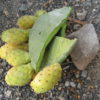
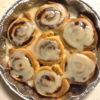
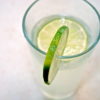
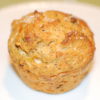
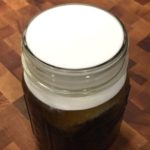


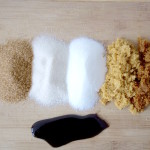
Leave a Reply